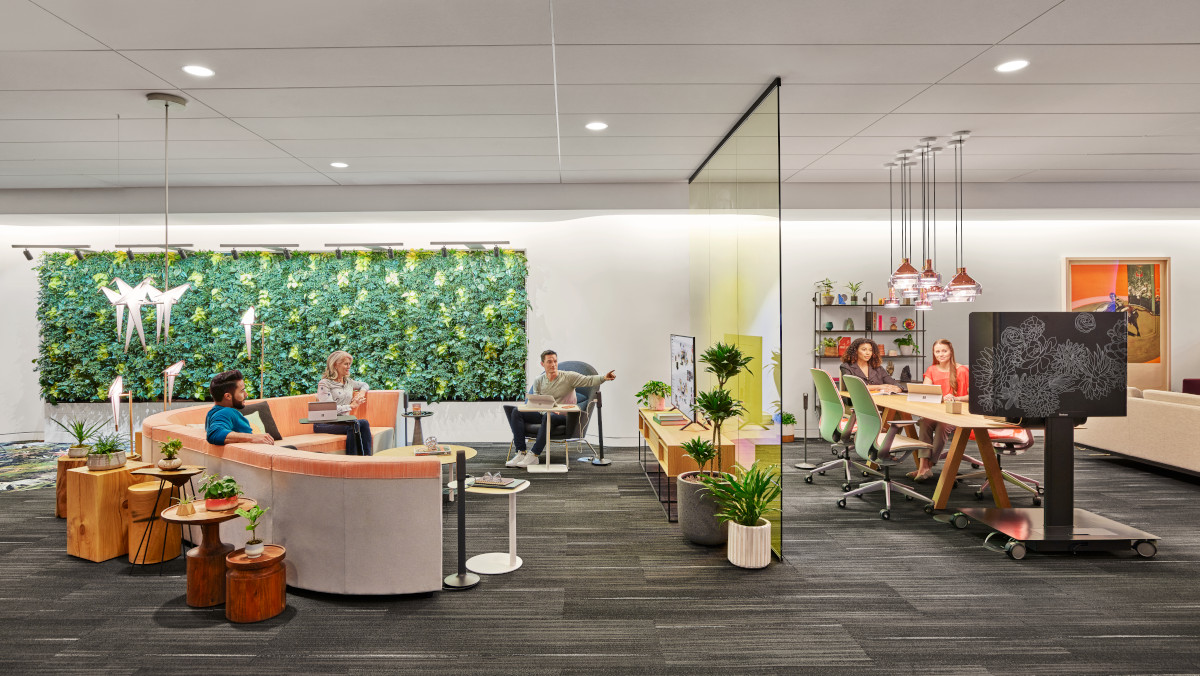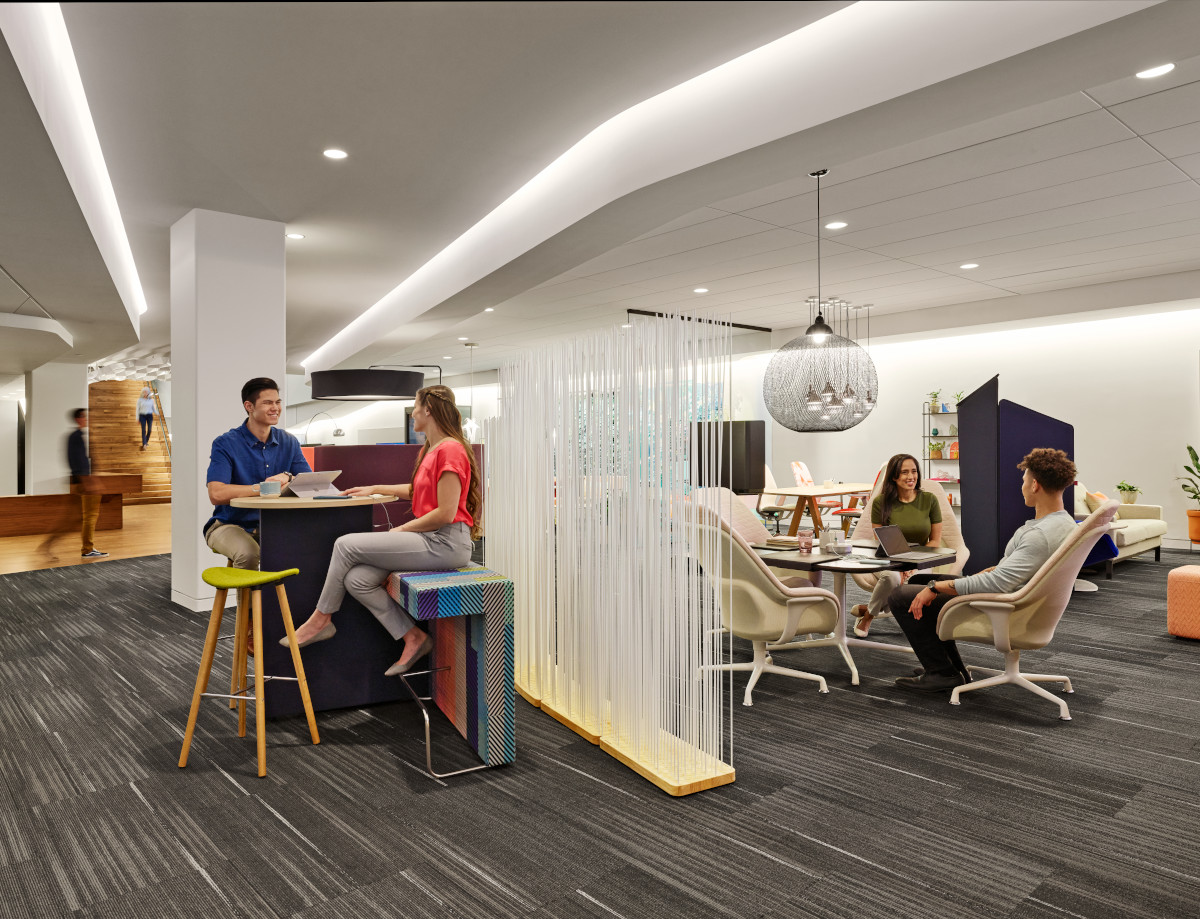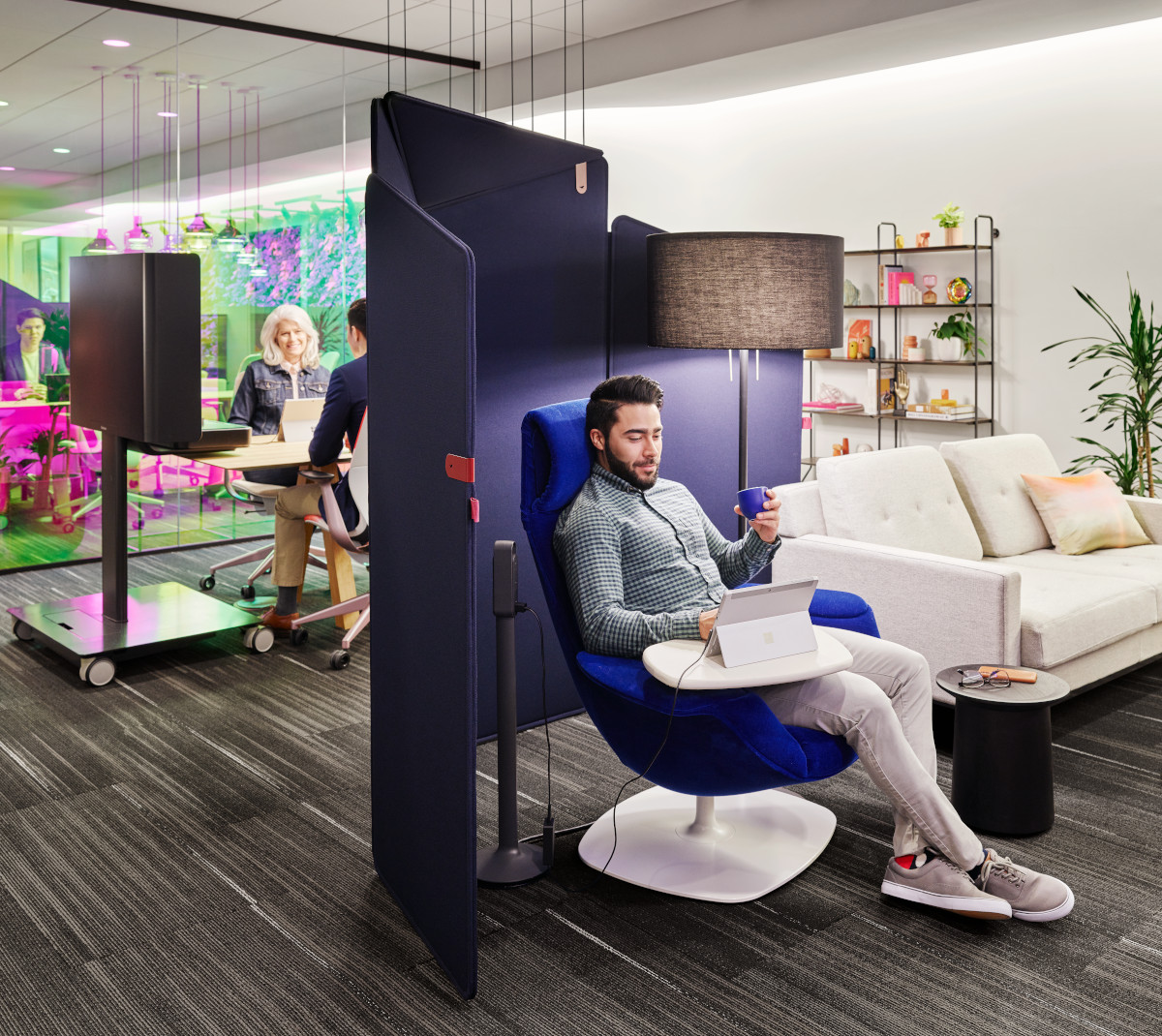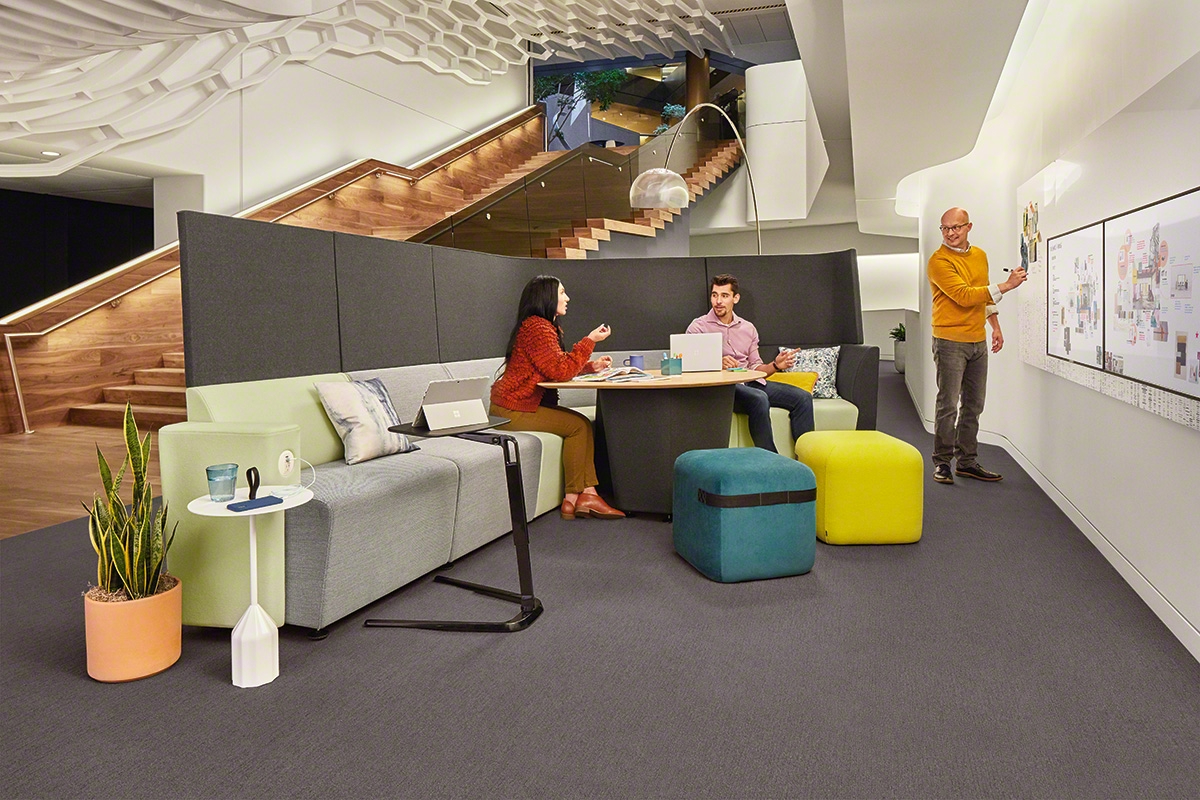We use cookies to maximize your online experience with us. By closing this window, you consent to our cookie policy. You can change your cookie settings in your browser any time. For more information, please see our Privacy Policy located on the footer of this site.
Hyper-Collaboration + Innovation, Part 1: Ways People Work Together

It has become an almost universal truth in today’s business climate that innovation is required for success, and that teamwork is required to innovate.
Steelcase’s recent Active Collaboration Study confirms that 93% of business leaders, managers and individual contributors believe that teamwork helps to generate better ideas.But with increasingly common disconnects between people, place and technology – diverse, distributed teams and outdated workspaces – teamwork can be difficult. How can business leaders cultivate collaboration and innovation? The answers lie in maximizing the performance of the physical workspace as much as that of people, and in recognizing that people and place are inextricably linked. To understand this, let’s first look at some of the ways people work together.

GENERATING NEW IDEAS
Today’s businesses are challenged to solve more complex problems and to do so faster than ever. Numerous business philosophies suggest strategies and provide frameworks for generating new ideas and solutions. One such framework is Stanford University’s Hasso Plattner Institute of Design’s, or d.school’s, principles of design thinking – a five-step methodology for creative problem solving:
- Empathize: learn about the audience for whom you are designing.
- Define the problem: construct a point of view that is based on user needs and insights.
- Ideate: brainstorm and come up with creative solutions.
- Prototype: build a representation of one or more of your ideas.
- Test: return to your original user group and test your ideas for feedback.
The critical component of design thinking is the way the steps are taken in a circular path rather than linear. A project isn’t complete at the end of the fifth step. On the contrary, because testing invites feedback and likely surfaces new ideas, the fifth step circles back to earlier steps in the process and opens business leaders to continuous reevaluation and redesign, and thus continuous innovation.

Generative thinking is a similar philosophy that, according to The Wharton School at the University of Pennsylvania, helps boards of directors and other business leaders become more holistically strategic rather than solely focused on an organization’s bottom line. With steps like “generating a large quantity of ideas to solve a single problem without judgment until all of the ideas have been posted,” this process encourages “nonjudgmental ways of creative thinking that allow directors to produce good ideas and explore subsequent decisions.”
PUTTING IDEAS INTO ACTION
Following through with decisive actions – and executing them quickly and flawlessly – requires similar tools and methods of working together. But to implement an idea, team members need to feel connected to that idea, with a sense of ownership and obligation. Steelcase’s research demonstrates that another business framework – active collaboration – “encourages people at work to become more physically, mentally and emotionally engaged in idea generation.” It requires that team members have a shared purpose. The right people are in the room; they listen to each other; and they’re able to build on each other’s work. They also have access to information, and an ability to display it, facilitating discussion. And last but not least they’re able to focus without distraction.

Some of these tools and processes suggest that rigid scripts must be followed for teams to ideate and innovate successfully, but dig into Steelcase’s data and there’s an underlying theme that in order to put ideas into action, team members need to feel a sense of autonomy and empowerment. The workplace culture must emphasize agility and flexibility as this Forbes columnist suggests, by “responding quickly to environmental changes, rather than keeping to strict process or procedure.” This is especially critical for younger employees who value purpose and experience, and who’ve grown up accustomed to speed and immediacy.
An agile work culture encourages risk taking and doesn’t fear failure. It’s about being flexible and responding quickly; minimizing formalities and distributing responsibility; and most of all, empowering autonomy. When people feel trusted to come up with their own ideas, to share those ideas openly and without judgment, and then to act on those ideas with support from their teammates, the ideas themselves become smarter, and the innovations they lead to become stronger.

But it all falls flat unless the physical workplace supports these modern ways of working. Read PART 2 of this blog post, where we dig into ways the office can (and must) support hyper-collaboration and innovation.
Want to explore Collaboration Solutions? Learn more here.
